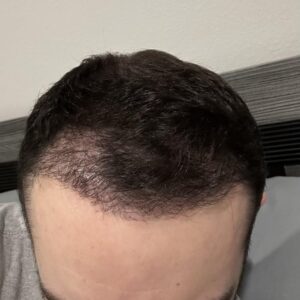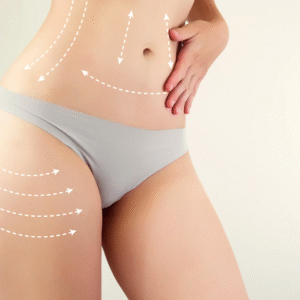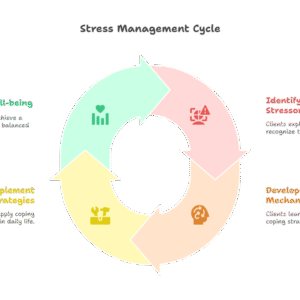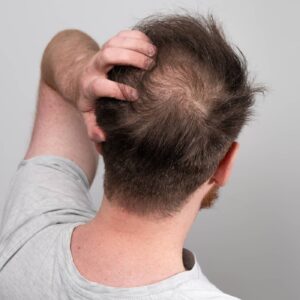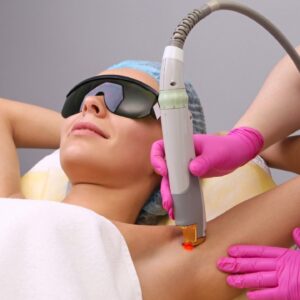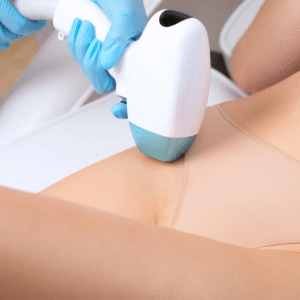Many men in Dubai notice puffiness or fullness in their chest and wonder: Is this just fat, or is it gynaecomastia? It’s a common question—and an important one.
While both conditions may look similar, the causes, treatments, and long-term solutions are very different. Understanding the difference between chest fat and true gynaecomastia surgery in Dubai can help you choose the right path, whether that means diet, exercise, or surgical treatment.
In this guide, we explore what distinguishes gynaecomastia from fat, how Dubai’s top experts diagnose it, and what you can do next.

What Is Gynaecomastia?
Gynaecomastia is the enlargement of male breast glandular tissue, not just fat. It’s often caused by hormonal imbalances, typically an increase in estrogen or a drop in testosterone.
It can occur at any age and is commonly seen:
-
During puberty
-
After steroid use
-
As a result of certain medications
-
With liver or thyroid issues
-
In aging men as hormone levels shift
Gynaecomastia often requires medical or surgical intervention, especially when it doesn’t go away on its own.
What Is Chest Fat?
Also known as pseudogynaecomastia, chest fat is simply excess fatty tissue stored around the chest area. It’s most commonly caused by:
-
Being overweight or obese
-
Poor diet and lack of exercise
-
Genetics (some men store more fat in the chest area)
This condition is not related to glandular growth or hormones and typically responds to weight loss and body fat reduction.
Key Differences Between Gynaecomastia and Fat
1. Texture
-
Gynaecomastia: Feels firm or rubbery, often behind the nipple
-
Fat: Feels soft, movable, and evenly spread
2. Location
-
Gynaecomastia: Localized under and around the areola (nipple area)
-
Fat: Distributed across the entire chest
3. Symmetry
-
Gynaecomastia: Can be one-sided (unilateral) or uneven
-
Fat: Usually symmetrical
4. Pain or Sensitivity
-
Gynaecomastia: May be tender or sore
-
Fat: Generally painless
5. Weight Loss Response
-
Gynaecomastia: Doesn’t go away with weight loss
-
Fat: Reduces with exercise and dieting
Still Not Sure? Dubai Clinics Offer Diagnosis
If you’re unsure whether you’re dealing with fat or gynaecomastia, book a consultation at a reputable clinic in Dubai. Specialists use:
-
Physical examination (palpation)
-
Ultrasound or mammogram for confirmation
-
Hormonal tests if needed
These steps help your surgeon or aesthetic physician determine the type of tissue and the best course of action.
Can Gynaecomastia and Chest Fat Coexist?
Yes—and it’s very common.
Many men have a combination of glandular tissue and excess fat. This is especially true if:
-
You’ve lost a significant amount of weight
-
You used anabolic steroids
-
You’re over 40 with natural skin laxity
In such cases, treatment often includes both liposuction and gland removal, resulting in a contoured, masculine chest.
What If It’s Just Fat? Non-Surgical Options
If you’ve been diagnosed with chest fat only, you may not need surgery. Options include:
✅ Lifestyle Changes:
-
Calorie-controlled diet
-
Resistance training (especially chest exercises)
-
Cardio for fat burning
✅ Non-surgical Body Contouring (Available in Dubai):
-
CoolSculpting: Freezes fat cells
-
Radiofrequency treatments: Tighten mild skin laxity
-
Laser lipolysis: Melts fat using laser energy
These options are suitable for mild to moderate chest fat and can help define the pectoral area without downtime.
When Is Surgery the Right Choice?
If your condition is diagnosed as true gynaecomastia—or if fat loss hasn’t improved your chest appearance—surgery may be the ideal option.
Gynaecomastia surgery in Dubai typically includes:
-
Liposuction: To remove fat
-
Gland excision: To remove dense tissue
-
Skin tightening: In some cases for older or post-weight-loss patients
This outpatient procedure is safe, fast, and delivers long-lasting, natural-looking results.
Why the Confusion Is Common
You’re not alone if you’ve been confused about whether you have gynaecomastia or just fat. Many men:
-
Avoid diagnosis due to embarrassment
-
Assume the issue will go away on its own
-
Rely on gym workouts without success
But identifying the root cause is key to confidence and effective treatment. Don’t let uncertainty delay your progress.
What Dubai Experts Recommend
Dubai’s top plastic surgeons and aesthetic physicians suggest:
-
Don’t self-diagnose
A clinical exam is the only reliable way to know for sure. -
Don’t over-rely on exercise
If it’s glandular, no amount of push-ups will solve it. -
Address it early
Younger patients heal faster and have better skin retraction. -
Choose qualified professionals
Select board-certified specialists with experience in male chest contouring.
You Deserve to Feel Confident
Whether your concern is chest fat or true gynaecomastia, the goal is the same: a chest that reflects your body goals and confidence.
Modern treatments in Dubai are discreet, effective, and widely accessible. With the right diagnosis and guidance, you can achieve results that make you feel proud and comfortable in your own skin.
Tajmeels Clinic: Clarity and Care You Can Trust
When it comes to diagnosing and treating gynaecomastia or chest fat, Tajmeels Clinic in Dubai provides comprehensive, professional care. Their specialists:
-
Conduct accurate assessments using advanced tools
-
Offer personalized treatment plans based on your chest anatomy
-
Combine aesthetic precision with medical expertise
-
Ensure post-treatment support for optimal healing
Whether you need surgery or just expert advice, Tajmeels is here to help you confidently move forward.
FAQs: Gynaecomastia vs. Fat
Q1: Can I have gynaecomastia even if I’m lean?
A: Yes. Many lean men develop glandular tissue that doesn’t respond to exercise or fat loss.
Q2: Will push-ups or weightlifting help?
A: They strengthen the chest muscles but won’t remove glandular tissue. You may see more definition, but not less bulk if it’s gynaecomastia.
Q3: How do doctors tell the difference?
A: Through physical examination and sometimes imaging (ultrasound or mammogram).
Q4: Does chest fat feel different than gynaecomastia?
A: Yes. Chest fat is soft and spread out. Gynaecomastia feels firmer and centered under the nipple.
Q5: Can fat become gynaecomastia?
A: No. Fat doesn’t transform into glandular tissue. However, obesity can trigger hormonal changes that may lead to gynaecomastia.

